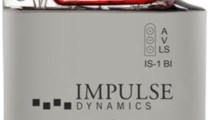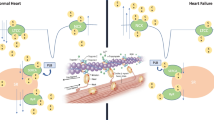Abstract
Background
Cardiac contractility modulation (CCM) has developed as a promising treatment device for heart failure (HF). This meta-analysis aimed at systematically reviewing the latest available published trials to provide evidence on the safety and efficacy of CCM in patients with HF.
Methods
We searched the Cochrane Central Resister of Controlled Trials, PubMed, and EMBASE in May 2016 to identify eligible clinical trials comparing CCM with sham treatment or with usual care. All-cause mortality, all-cause hospitalization, and serious cardiopulmonary adverse effects were considered to be the primary outcomes of interest in evaluating the safety of CCM for patients with HF. Peak oxygen consumption and 6‑min walk tests were performed as the second outcomes of interest to assess efficacy. Risk ratio (RR), standard mean difference (SMD), and 95% confidence intervals (CIs) were calculated.
Results
Four studies enrolling 723 participants were included. Compared with the control arm, CCM did not significantly improve all-cause mortality or all-cause hospitalizations. No differences were observed for adverse effects of CCM, possibly due to the low number of studies. By contrast, CCM significantly improved peak oxygen consumption (standard mean difference 0.233, 95% CI, 0.065–0.401 ml/kg/min, p = 0.006) and the 6‑min walk test distance (standard mean difference 0.924, 95% CI, 0.001–0.334 m, p = 0.049).
Conclusion
In our meta-analysis of published clinic trials we found that CCM did not lower the risk of severe cardiovascular adverse events; however, it was associated with remarkable improvements in functional cardiopulmonary capacity. Therefore, CCM may serve as an alternative option for patients with advanced HF.
Zusammenfassung
Hintergrund
Die kardiale Kontraktilitätsmodulation (CCM) hat sich zu einer vielversprechenden Therapieform bei Herzinsuffizienz entwickelt. Die vorliegende Metaanalyse dient der systematischen Übersicht über die neuesten verfügbaren Veröffentlichungen von Studien mit dem Ziel, die Sicherheit und Wirksamkeit der CCM bei Patienten mit Herzinsuffizienz nachzuweisen.
Methoden
Die Datenbanken Cochrane Central Register of Controlled Trials, PubMed und EMBASE wurden im Mai 2016 durchsucht, um geeignete klinische Studien zu ermitteln, in denen die CCM mit einer Scheinbehandlung oder mit der üblichen Versorgung verglichen wurde. Die Gesamtmortalität, die Krankenhausaufenthalte aus sämtlichen Ursachen und schwere kardiopulmonale unerwünschte Wirkungen wurden als primäre Endpunkte von Interesse angesehen, um die Sicherheit der CCM bei Patienten mit Herzinsuffizienz zu beurteilen. Als sekundäre Endpunkte von Interesse zur Beurteilung der Wirksamkeit wurde der Sauerstoffspitzenverbrauch ermittelt und der 6‑min-Gehtest durchgeführt. Das Risikoverhältnis (RR), die standardisierte Mittelwertdifferenz (SMD) und das 95%-Konfidenzintervall (95%-KI) wurden berechnet.
Ergebnisse
Es wurden 4 Studien mit 723 Teilnehmern in die Auswertung eingeschlossen. Im Vergleich zum Kontrollarm führte die CCM nicht zu einer signifikanten Verbesserung der Gesamtmortalität oder der Krankenhausaufenthalte aus sämtlichen Ursachen. In Bezug auf unerwünschte Wirkungen der CCM wurde kein Unterschied festgestellt, möglicherweise wegen der geringen Anzahl an Studien. Dagegen besserten sich durch CCM der Sauerstoffspitzenverbrauch (SMD: 0,233; 95%-KI: 0,065–0,401 ml/kg/min; p = 0,006) und die Strecke im 6‑min-Gehtest signifikant (SMD: 0,924; 95%-KI: 0,001–0,334 m; p = 0,049).
Schlussfolgerung
In der vorliegenden Metaanalyse publizierter klinischer Studien stellten die Autoren fest, dass die CCM zwar nicht das Risiko schwerer kardiovaskulärer unerwünschter Ereignisse verringerte, jedoch mit bemerkenswerten Verbesserungen der funktionellen kardiopulmonalen Kapazität vergesellschaftet war. Daher stellt die CCM möglicherweise eine Alternativoption für Patienten mit fortgeschrittener Herzinsuffizienz dar.









Similar content being viewed by others
References
Norton C, Georgiopoulou VV, Kalogeropoulos AP, Butler J (2011) Epidemiology and cost of advanced heart failure. Prog Cardiovasc Dis 54(2):78–85
Choi AJ, Thomas SS, Singh JP (2016) Cardiac resynchronization therapy and implantable cardioverter defibrillator therapy in advanced heart failure. Heart Fail Clin 12(3):423–436
Cleland JG, Daubert JC, Erdmann E, Freemantle N, Gras D, Kappenberger L, Tavazzi L (2006) Longer-term effects of cardiac resynchronization therapy on mortality in heart failure [the CArdiac REsynchronization-Heart Failure (CARE-HF) trial extension phase. Eur Heart J 27(16):1928–1932
Bristow MR, Saxon LA, Boehmer J, Krueger S, Kass DA, De Marco T, Carson P, DiCarlo L, DeMets D, White BG, DeVries DW, Feldman AM (2004) Cardiac-resynchronization therapy with or without an implantable defibrillator in advanced chronic heart failure. N Engl J Med 350(21):2140–2150
Yip GW, Fung JW (2011) Cardiac resynchronisation therapy for heart failure with narrow or normal QRS. Heart 97(13):1029–1031
Zhang Q, Yu CM (2011) Could exercise unveil the mystery of non-response to cardiac resynchronization therapy? Europace 13(6):768–769
Burkhoff D, Ben-Haim SA (2005) Nonexcitatory electrical signals for enhancing ventricular contractility: rationale and initial investigations of an experimental treatment for heart failure. Am J Physiol Heart Circ Physiol 288(6):H2550–H2556
Butter C, Rastogi S, Minden H, Meyhöfer J, Burkhoff D, Sabbah HN (2008) Cardiac contractility modulation electrical signals improve myocardial gene expression in patients with heart failure. J Am Coll Cardiol 51(18):1784–1789
Winter J, Brack KE, Ng GA (2011) Cardiac contractility modulation in the treatment of heart failure: initial results and unanswered questions. Eur J Heart Fail 13(7):700–710
Gupta RC, Mishra S, Wang M, Jiang A, Rastogi S, Rousso B, Mika Y, Sabbah HN (2009) Cardiac contractility modulation electrical signals normalize activity, expression, and phosphorylation of the NA+-CA2+ exchanger in heart failure. J Card Fail 15(1):48–56
Borggrefe M, Burkhoff D (2012) Clinical effects of cardiac contractility modulation (CCM) as a treatment for chronic heart failure. Eur J Heart Fail 14(7):703–712
Abi-Samra F, Gutterman D (2016) Cardiac contractility modulation: a novel approach for the treatment of heart failure. Heart Fail Rev 21:645–660. doi:10.1007/s10741-016-9571-6
Roubertie F, Eschalier R, Zemmoura A, Thambo JB, Rooryck C, Labrousse L, Ploux S, Ritter P, Haissaguerre M, Dos SP, Bordachar P (2016) Cardiac contractility modulation in a model of repaired tetralogy of fallot: a sheep model. Pediatr Cardiol 37(5):826–833
Liu M, Fang F, Luo XX, Shlomo B, Burkhoff D, Chan JYS, Chan C, Cheung L, Rousso B, Gutterman D, Yu C (2016) Improvement of long-term survival by cardiac contractility modulation in heart failure patients: a case–control study. Int J Cardiol 206:122–126
Neelagaru SB, Sanchez JE, Lau SK, Greenberg SM, Raval NY, Worley S, Kalman J, Merliss AD, Krueger S, Wood M (2006) Nonexcitatory, cardiac contractility modulation electrical impulses: Feasibility study for advanced heart failure in patients with normal QRS duration. Heart Rhythm 3(10):1140–1147
Borggrefe MM, Lawo T, Butter C, Schmidinger H, Lunati M, Pieske B, Misier AR, Curnis A, Bocker D, Remppis A, Kautzner J, Stuhlinger M, Leclerq C, Taborsky M, Frigerio M, Parides M, Burkhoff D, Hindricks G (2008) Randomized, double blind study of non-excitatory, cardiac contractility modulation electrical impulses for symptomatic heart failure. Eur Heart J 29(8):1019–1028
Kadish A, Nademanee K, Volosin K, Krueger S, Neelagaru S, Raval N, Obel O, Weiner S, Wish M, Carson P, Ellenbogen K, Bourge R, Parides M, Chiacchierini RP, Goldsmith R, Goldstein S, Mika Y, Burkhoff D, Abraham WT (2011) A randomized controlled trial evaluating the safety and efficacy of cardiac contractility modulation in advanced heart failure. Am Heart J 161(2):329–337
Myers J, Gullestad L, Vagelos R, Do D, Bellin D, Ross H, Fowler MB (2000) Cardiopulmonary exercise testing and prognosis in severe heart failure: 14 mL/kg/min revisited. Am Heart J 139(1 Pt 1):78–84
Francis DP, Shamim W, Davies LC, Piepoli MF, Ponikowski P, Anker SD, Coats AJ (2000) Cardiopulmonary exercise testing for prognosis in chronic heart failure: continuous and independent prognostic value from VE/VCO (2)slope and peak VO (2). Eur Heart J 21(2):154–161
Demers C, McKelvie RS, Negassa A, Yusuf S (2001) Reliability, validity, and responsiveness of the six-minute walk test in patients with heart failure. Am Heart J 142(4):698–703
Kuschyk J, Roeger S, Schneider R, Streitner F, Stach K, Rudic B, Weiss C, Schimpf R, Papavasilliu T, Rousso B, Burkhoff D, Borggrefe M (2015) Efficacy and survival in patients with cardiac contractility modulation: long-term single center experience in 81 patients. Int J Cardiol 183:76–81
Kramer DG, Trikalinos TA, Kent DM, Antonopoulos GV, Konstam MA, Udelson JE (2010) Quantitative evaluation of drug or device effects on ventricular remodeling as predictors of therapeutic effects on mortality in patients with heart failure and reduced ejection fraction: a meta-analytic approach. J Am Coll Cardiol 56(5):392–406
Kloppe A, Mijic D, Schiedat F, Bogossian H, Mügge A, Rousso B, Lemke B (2016) A randomized comparison of 5 versus 12 hours per day of cardiac contractility modulation treatment for heart failure patients: A preliminary report. Cardiol J 23(1):114–119
Zhang Q, Chan Y, Liang Y, Fang F, Lam Y, Chan C, Lee AP, Chan KC, Wu EB, Yu C (2013) Comparison of left ventricular reverse remodeling induced by cardiac contractility modulation and cardiac resynchronization therapy in heart failure patients with different QRS durations. Int J Cardiol 167(3):889–893
Acknowledgements
This work was supported by the Nature Science Foundation of Hubei Province (No. 2014CFA061) and the Foundation Research Funds for the Central Research Funds for the Central Universities, China (No. 2042016kf0082).
Author information
Authors and Affiliations
Corresponding author
Rights and permissions
About this article
Cite this article
Liu, X., Yang, H.J., Ping, H.Q. et al. The safety and efficacy of cardiac contractility modulation in heart failure. Herz 42, 766–775 (2017). https://doi.org/10.1007/s00059-016-4514-5
Received:
Revised:
Accepted:
Published:
Issue Date:
DOI: https://doi.org/10.1007/s00059-016-4514-5
Keywords
- Heart contractility
- Heart failure
- Ventricular remodeling
- Cardiac resynchronization therapy
- Meta-analysis




